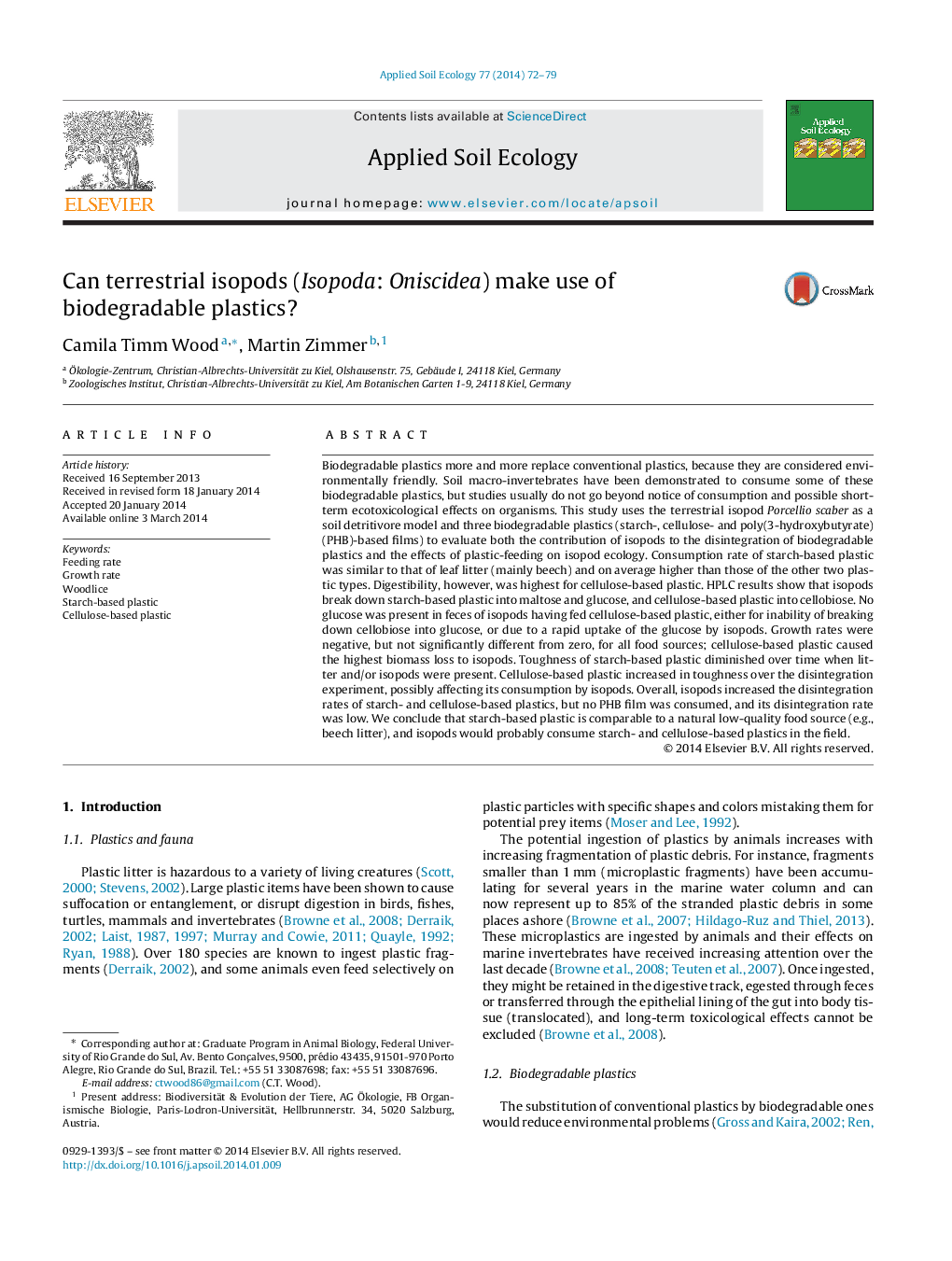| کد مقاله | کد نشریه | سال انتشار | مقاله انگلیسی | نسخه تمام متن |
|---|---|---|---|---|
| 4382308 | 1617806 | 2014 | 8 صفحه PDF | دانلود رایگان |

• We verified effects of biodegradable plastic consumption by terrestrial isopods.
• Isopods can speed up the disintegration rate of biodegradable plastics.
• Consumption rate of starch-based and low quality litter is similar.
• Consumption occurs when low quality leaf litter is available.
• Isopods can break down the biodegradable plastics into smaller molecules.
Biodegradable plastics more and more replace conventional plastics, because they are considered environmentally friendly. Soil macro-invertebrates have been demonstrated to consume some of these biodegradable plastics, but studies usually do not go beyond notice of consumption and possible short-term ecotoxicological effects on organisms. This study uses the terrestrial isopod Porcellio scaber as a soil detritivore model and three biodegradable plastics (starch-, cellulose- and poly(3-hydroxybutyrate) (PHB)-based films) to evaluate both the contribution of isopods to the disintegration of biodegradable plastics and the effects of plastic-feeding on isopod ecology. Consumption rate of starch-based plastic was similar to that of leaf litter (mainly beech) and on average higher than those of the other two plastic types. Digestibility, however, was highest for cellulose-based plastic. HPLC results show that isopods break down starch-based plastic into maltose and glucose, and cellulose-based plastic into cellobiose. No glucose was present in feces of isopods having fed cellulose-based plastic, either for inability of breaking down cellobiose into glucose, or due to a rapid uptake of the glucose by isopods. Growth rates were negative, but not significantly different from zero, for all food sources; cellulose-based plastic caused the highest biomass loss to isopods. Toughness of starch-based plastic diminished over time when litter and/or isopods were present. Cellulose-based plastic increased in toughness over the disintegration experiment, possibly affecting its consumption by isopods. Overall, isopods increased the disintegration rates of starch- and cellulose-based plastics, but no PHB film was consumed, and its disintegration rate was low. We conclude that starch-based plastic is comparable to a natural low-quality food source (e.g., beech litter), and isopods would probably consume starch- and cellulose-based plastics in the field.
Journal: Applied Soil Ecology - Volume 77, May 2014, Pages 72–79